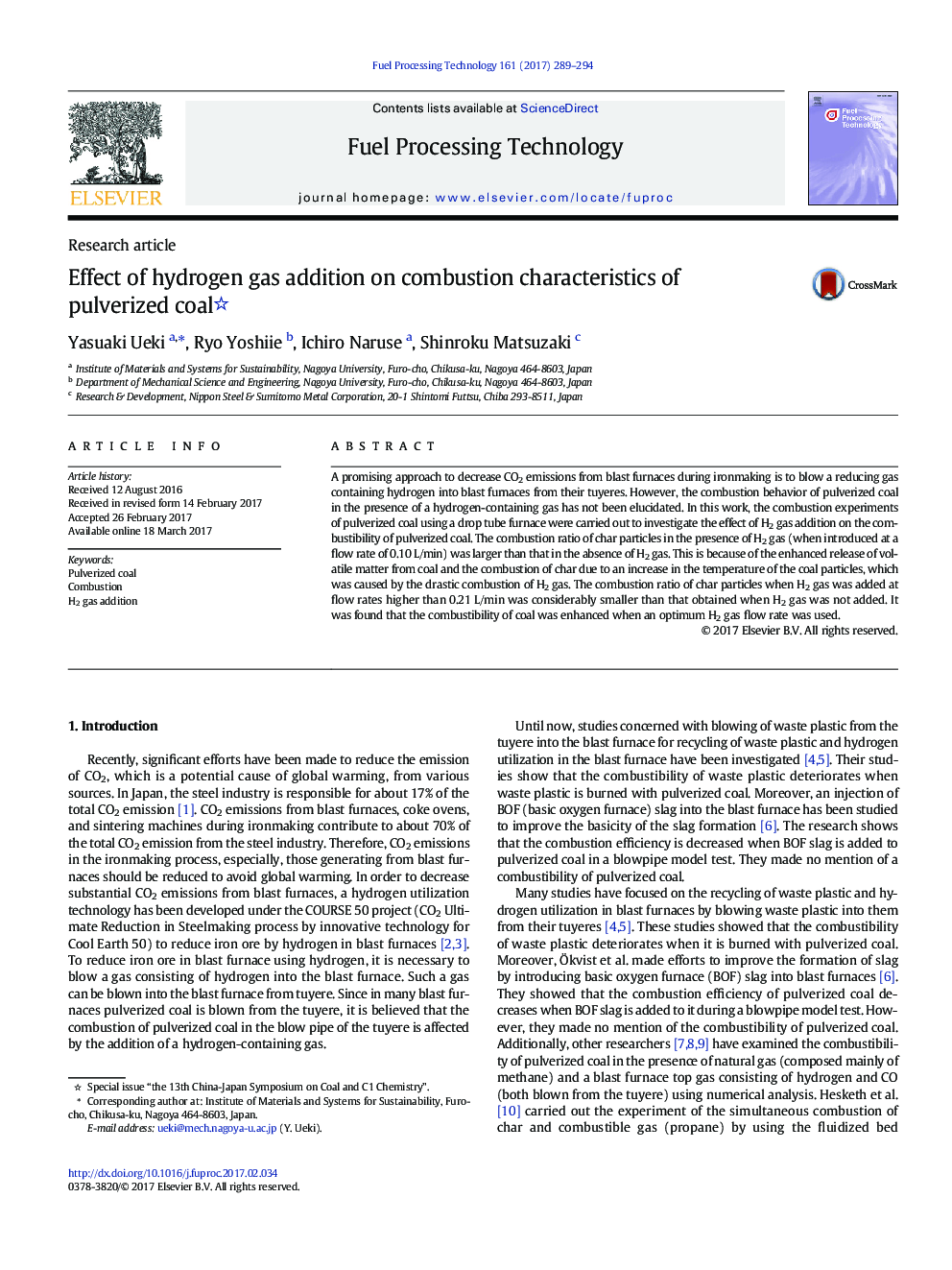| Article ID | Journal | Published Year | Pages | File Type |
|---|---|---|---|---|
| 6476552 | Fuel Processing Technology | 2017 | 6 Pages |
â¢Effect of H2 gas addition on the combustibility of pulverized coal was studied.â¢Porous char particles were formed by H2 gas additionâ¢Porous carbonaceous matrix in char particles improved the combustibility of coal.â¢An optimum H2 flow rate (5% of heating value of coal) enhanced the combustibility of coal.
A promising approach to decrease CO2 emissions from blast furnaces during ironmaking is to blow a reducing gas containing hydrogen into blast furnaces from their tuyeres. However, the combustion behavior of pulverized coal in the presence of a hydrogen-containing gas has not been elucidated. In this work, the combustion experiments of pulverized coal using a drop tube furnace were carried out to investigate the effect of H2 gas addition on the combustibility of pulverized coal. The combustion ratio of char particles in the presence of H2 gas (when introduced at a flow rate of 0.10Â L/min) was larger than that in the absence of H2 gas. This is because of the enhanced release of volatile matter from coal and the combustion of char due to an increase in the temperature of the coal particles, which was caused by the drastic combustion of H2 gas. The combustion ratio of char particles when H2 gas was added at flow rates higher than 0.21Â L/min was considerably smaller than that obtained when H2 gas was not added. It was found that the combustibility of coal was enhanced when an optimum H2 gas flow rate was used.
